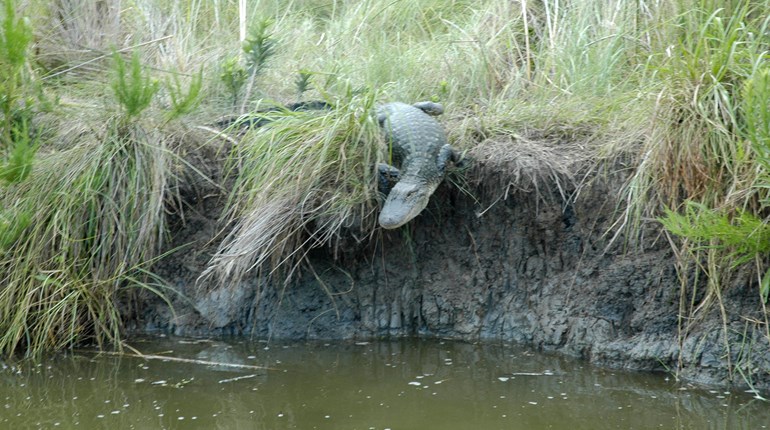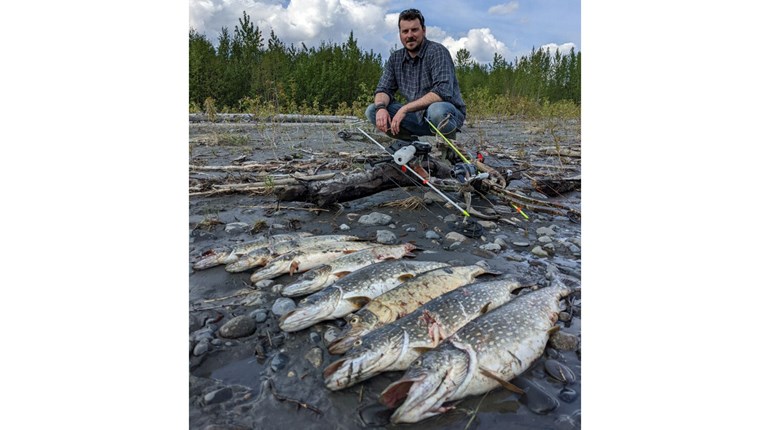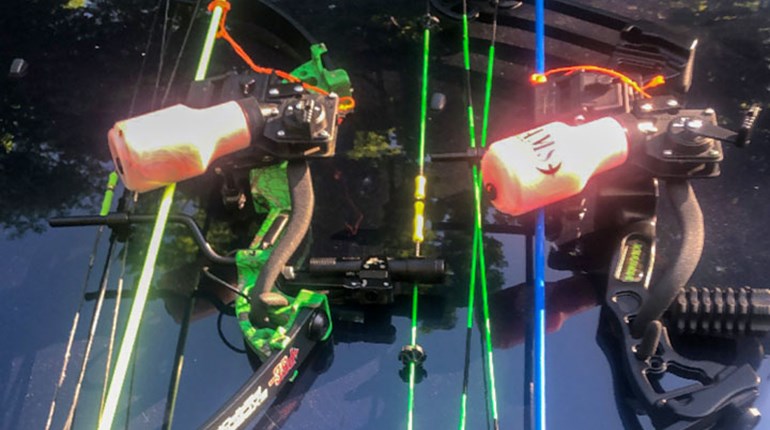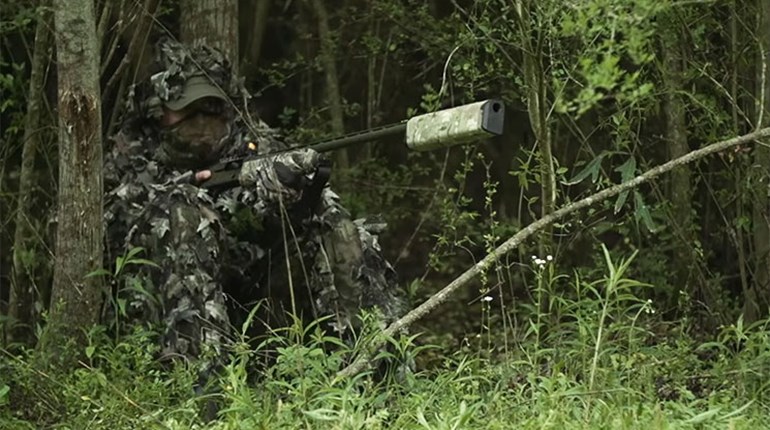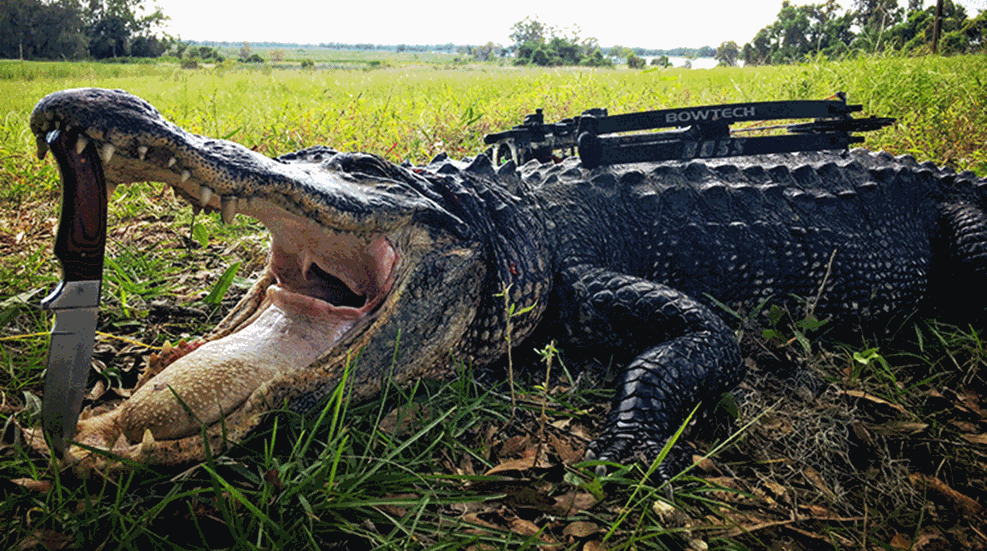
If you’re looking for a unique adventure in which you have the opportunity to harvest an apex predator with a stick and string, look no further than the American alligator. This more than 8-million-year-old species of reptile is native to southeastern United States, and can be legally hunted in Alabama, Arkansas, Florida, Georgia, Louisiana, Mississippi, South Carolina and Texas.
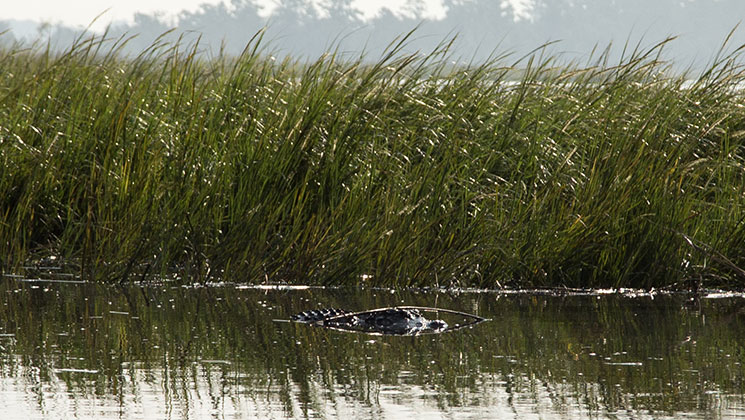
For the 2017 season, I was fortunate enough to draw a tag in South Carolina. To make sure I was best prepared for the hunt, I reached out to Mark Land with Muzzy Bowfishing to learn as much as I could about the equipment I would need for bowfishing gators.
For starters, Land strongly advised that I either hunt with someone who had experience hunting alligators, or seek out a guide, noting that alligator hunting can quickly go south if you don’t know what you are doing. Getting a bow set up to hunt gators with would be the easiest part.
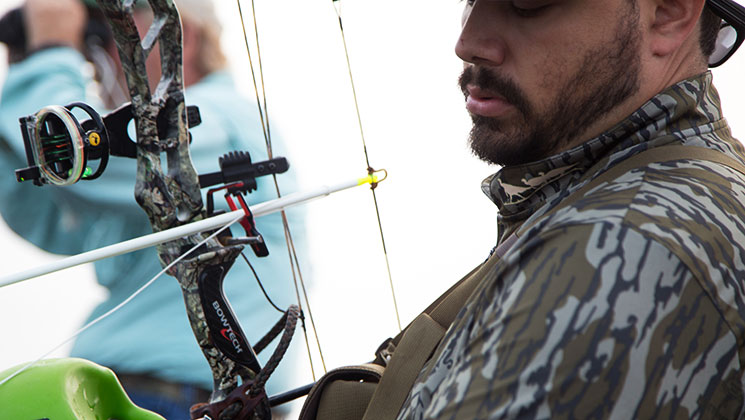
Ultimately, I choose to hunt with an older Bowtech Boss, and I also carried a Muzzy Addict Bowfishing Bow as a backup. Both were rigged with a Muzzy Gator Kit.
Depending on which state you hunt, the regulations for gators may vary. But after speaking with Land and also reaching out to Ron Russell with Gator Getter Consultants in Charleston, South Carolina, I learned that basic tactics for bowhunting gators remain the same.
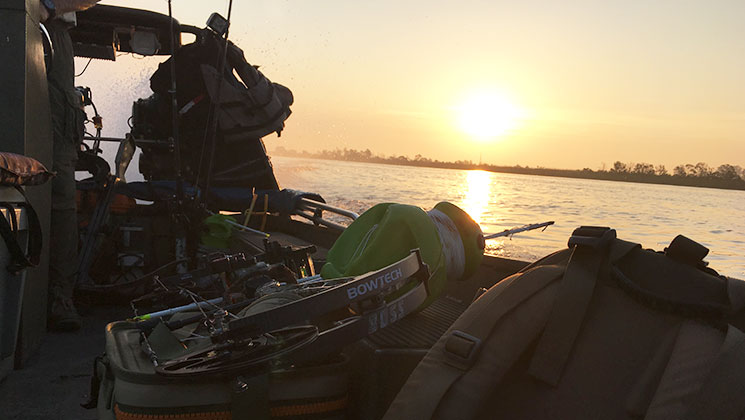
Basic Gator Hunting Tactics*
• Go where others aren’t. Just as you would do with any other type of hunting, finding a good gator is about preseason scouting and looking for gators where other people aren’t going. While Land hunts primarily at night, Russell has found that hunting during the day offers more success for his clients as he is able to avoid heavier pressure on gators.
• Judging a gator. When estimating the size of a gator, estimate the distance between the eyes and the nostrils to determine a rough overall length. If the distance is six inches, the gator will be approximately six feet. Both Land and Russell noted that gators really begin to pack on the weight once they hit the nine to 10 foot mark. Russell also mentioned that gators 10 feet and up will more than likely be males as females rarely reach that mark.
• Gator hunting requires patience. Just because a gator sinks below the surface and out of sight, doesn’t mean it is a lost cause. Gators, especially large ones, can hold their breath for periods of more than an hour. Russell’s philosophy is “if a good sized gator dives and reappears 25 to 30 yards away still swimming, it is scared and probably won’t be caught. But, if a good sized gator dives and doesn’t reappear right away, they aren’t going far and are worth waiting for.” Patience also comes in handy as you will most likely have a few blown stalks before you successfully arrow a gator.
• Dispatching your gator. The most common method way to dispatch a tethered gator is by using a bang stick. Russell prefers to use a knife to sever to spine, but gators also can be taken by dispatching them with a well-placed broadhead.
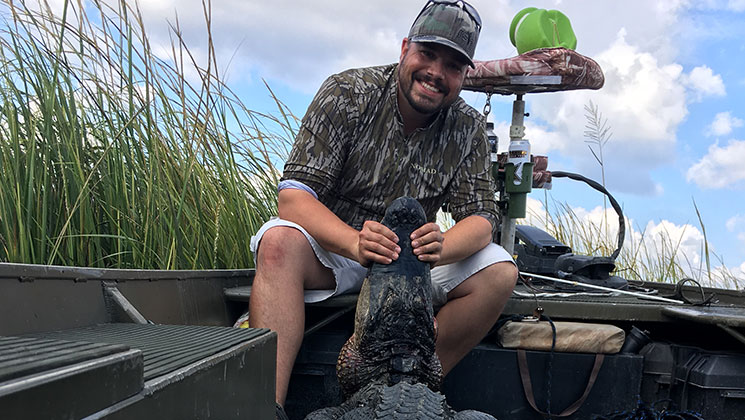
Russell put it best when he said, “gator hunting is a lot of down time that culminates with 15 minutes of pure adrenaline-pumping excitement.” After watching the water explode from a thrashing gator and also successfully punching a tag with him, I can assure you that statement is 100 percent accurate.
*As with any hunt, regulations vary by state, and it is best to check with the local state game and fish to ensure you are hunting within the law.












